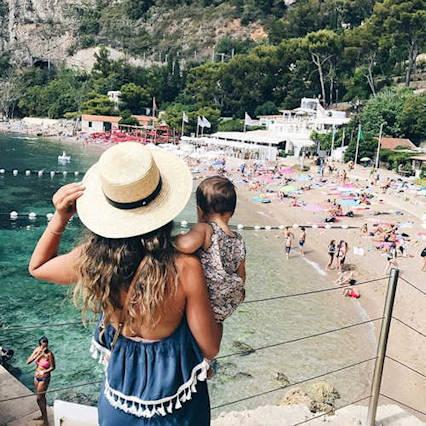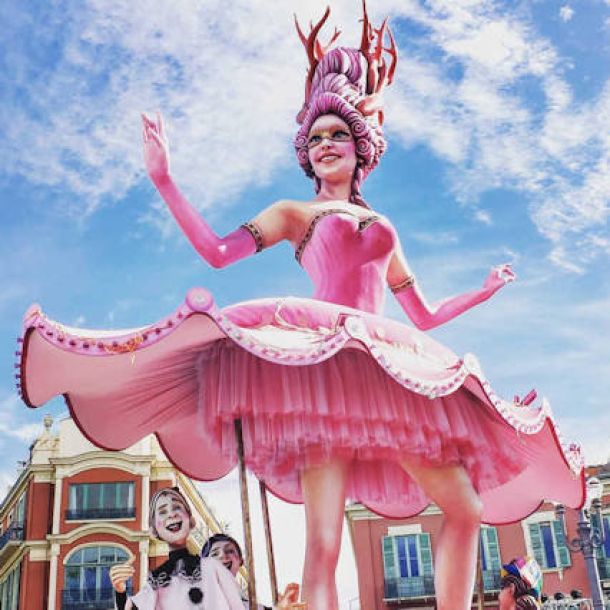- Last updated on .
- Hits: 1688
Holidays in Languedoc Roussillon
 In recent years the Languedoc region in France has become a popular French holiday destination, with long sunny days, Mediterranean beaches and plenty of tourist facilities. The Languedoc region, France, is also home to thousands of miles of walks and bike rides; National Parks and wildlife reserves (such as the Camargue and the Cevennes); thermal springs and spas; grottoes and caves; and plenty of ancient historical sites covering the whole of the Languedoc's long history. Here we cover some of the best places to visit during your holidays in Languedoc.
In recent years the Languedoc region in France has become a popular French holiday destination, with long sunny days, Mediterranean beaches and plenty of tourist facilities. The Languedoc region, France, is also home to thousands of miles of walks and bike rides; National Parks and wildlife reserves (such as the Camargue and the Cevennes); thermal springs and spas; grottoes and caves; and plenty of ancient historical sites covering the whole of the Languedoc's long history. Here we cover some of the best places to visit during your holidays in Languedoc.
The Languedoc, France
The name Languedoc literally means "language of yes" – langue d'oc – but obviously something has gone missing in translation. "Oc" was how the Occitan-speaking inhabitants of this part of south-west France said " yes ", as opposed to northerners who said "oïl". Now, everyone in France says "oui" – apart from Catalan speakers in the southern province of Roussillon, who say "si", just to confuse things further.
Languedoc-Roussillon has always been more down-to-earth than its eastern neighbour, the Cote d'Azur and this is reflected in a landscape that ranges from rugged mountains to vine-covered hills and plains, down to its vast coast. Languedoc's turbulent history has seen religious persecution, farmers' revolts and an attempt to eradicate the Occitan language.
Holidays in Languedoc Roussillon
 The Languedoc is also home to one of France's most dynamic cities, Montpellier, which has the world's oldest continuously operating university. Montpellier is the Capital of Languedoc and is also the fastest growing city in France. Montpellier also frequently tops the list of French cities the French people would like to live in. Montpellier's university helps to give that city an unusually large population of people under 25, which means that the bars, clubs and restaurants don't give up the ghost once summer ends. But once the students leave at the end of term, the annual summer festivities get into full flow. The Roman cities of Languedoc: Nimes and Narbonne, wear their long history comfortably while retaining a typically southern, relaxed ambience.
The Languedoc is also home to one of France's most dynamic cities, Montpellier, which has the world's oldest continuously operating university. Montpellier is the Capital of Languedoc and is also the fastest growing city in France. Montpellier also frequently tops the list of French cities the French people would like to live in. Montpellier's university helps to give that city an unusually large population of people under 25, which means that the bars, clubs and restaurants don't give up the ghost once summer ends. But once the students leave at the end of term, the annual summer festivities get into full flow. The Roman cities of Languedoc: Nimes and Narbonne, wear their long history comfortably while retaining a typically southern, relaxed ambience.
Rugby-mad Béziers in Languedoc is often overlooked as a cultural highlight, but its 14th-century St-Nazaire cathedral is a fine example of Gothic architecture. The original building was burnt during the infamous sacking of Béziers in 1209, when the Catholic Church's crusaders slaughtered thousands of people in their hunt for a handful of Cathar heretics. Make the effort to climb to the top to get magnificent views of the river Orb that winds through the city, and surrounding countryside. Every August, Béziers hosts its Feria – four days of bullfighting, singing and dancing.
Holidays in Languedoc Roussillon: Carcassonne
 Carcassonne combines its workaday lower town with the wonderful medieval Cité. Carcassonne castle is now the 3rd most visited site in the whole of France. Carcassonne castle was practically a ruin until it was restored in the 19th century. If you are visiting the Languedoc in July, make sure you head to Carcassonne for Bastille Day. Every 14 July, spectacular fireworks are set off behind the ramparts of La Cité, the grand finale of which is a dramatic impression of the whole citadel being ablaze.
Carcassonne combines its workaday lower town with the wonderful medieval Cité. Carcassonne castle is now the 3rd most visited site in the whole of France. Carcassonne castle was practically a ruin until it was restored in the 19th century. If you are visiting the Languedoc in July, make sure you head to Carcassonne for Bastille Day. Every 14 July, spectacular fireworks are set off behind the ramparts of La Cité, the grand finale of which is a dramatic impression of the whole citadel being ablaze.
Head further south in the Languedoc, and you reach the capital of French Catalonia: Perpignan, one of the most pleasing cities in which to amble about. The gateway to Perpignan is the 14th-century Castillet, which houses a Catalan folklore museum and whose arch is worth a climb for views of Mont Canigou. At the southern end of the town is the Palais des Rois de Majorque, an imposing 13th-century reminder of when Perpignan was part of the kingdom of Mallorca.
Languedoc holidays
In recent years the Languedoc has become a popular French holiday destination, with long sunny days, Mediterranean beaches and plenty of tourist facilities. The Languedoc is also home to thousands of miles of walks and bike rides; National Parks and wildlife reserves (such as the Camargue and the Cevennes); thermal springs and spas; grottoes and caves; and plenty of ancient historical sites covering the whole of the Languedoc's long history, (including dinosaur bones and eggs, prehistoric human remains, dolmens and megaliths, Greek and Roman architecture, and everywhere reminders of the the Cathars, the papal Crusade against them, and the Papal Inquisition that followed the crusade).
The Languedoc coast
 The Languedoc has over 40 blue flag beaches along its coastline. You won't find the St-Tropez poseurs here – nor the hefty prices that follow them. The beaches of Languedoc are not as developed as their eastern counterparts just now, but they are starting to catch up. Part of this is to do with the stronger winds and the erratic coastline, which has a tendency to sprout lagoons here and there. A good example is the 12-mile spit of land that takes you to from Sete to Cap d'Agde. Once the road that hugged the beach was full of Caravans and Campervans. But these have been cleared away, a new road has been built that allows the beach to spill back further in-land and plenty of new car parks have been created. Money has also been spent on upgrading toilet and shower facilities.
The Languedoc has over 40 blue flag beaches along its coastline. You won't find the St-Tropez poseurs here – nor the hefty prices that follow them. The beaches of Languedoc are not as developed as their eastern counterparts just now, but they are starting to catch up. Part of this is to do with the stronger winds and the erratic coastline, which has a tendency to sprout lagoons here and there. A good example is the 12-mile spit of land that takes you to from Sete to Cap d'Agde. Once the road that hugged the beach was full of Caravans and Campervans. But these have been cleared away, a new road has been built that allows the beach to spill back further in-land and plenty of new car parks have been created. Money has also been spent on upgrading toilet and shower facilities.
Carry on to the smaller resorts of Valras-Plage, Gruissan (where Betty Blue was filmed), and down to the resorts around Perpignan and you'll find families settled in for the summer along the many Blue Flag beaches. The landscape of the Languedoc coast changes once you get to the Côte Vermeille, towards the Spanish border. Here, swimming coves are tucked into the rocky coast, and pretty seaside villages such as Collioure, Port-Vendres and Banyuls-sur-Mer add a distinctive Catalan flavour.
Holiday in Languedoc Roussillon: Roman history
You can't miss the mark the Romans made on the region. Just follow the remnants of the Via Domitia, the road built in 118BC to connect Spain with Italy. You can see part of it in Narbonne, a major port in Roman Gaul before the town's harbour silted up in the 14th century. You can pick up the trail further east in the village of St-Thibery, near Pezenas, where an intact Roman bridge crosses the Hérault river. Eventually, you can make your way to Nimes. Its splendid Roman amphitheatre is in better condition than the one in nearby Arles, and is the setting for bullfighting and open-air concerts.
An impressive feat of Roman engineering is the Pont du Gard, the three-tiered aqueduct that spans the Gardon river in the east of the region, near Uzès. Although much of it had to be restored during the 18th and 19th centuries, there is enough of the original Roman construction for it to be a Unesco World Heritage Site, and one of France's top-five tourist attractions.
The Languedoc: an outdoors holiday experience
 With the Languedoc, you are in prime hiking territory. The Parc Naturel Régional du Haut-Languedoc is at the southernmost point of the Massif Central. It includes the Montagne Noire, Mont Caroux, the Monts de Lacaune and the Monts d'Orb. The whole area covers more than 1,000 square miles of mountains, rivers, lakes and forests, with pleasant towns such as Bédarieux, Olargues and St-Pons-de-Thomières to use as a base for a walking or cycling holiday.
With the Languedoc, you are in prime hiking territory. The Parc Naturel Régional du Haut-Languedoc is at the southernmost point of the Massif Central. It includes the Montagne Noire, Mont Caroux, the Monts de Lacaune and the Monts d'Orb. The whole area covers more than 1,000 square miles of mountains, rivers, lakes and forests, with pleasant towns such as Bédarieux, Olargues and St-Pons-de-Thomières to use as a base for a walking or cycling holiday.
The Pyrenees provide even more vigorous exercise thanks to the higher altitudes. The eastern side of the Pyrenees includes the vast mountain range that includes the 9,137-ft Canigou, which Catalans consider the symbol of their region.
Horse-lovers can explore the landscapes and villages of the Camargue, where the delta of the Rhône river has created an unusually open landscape in which it's hard to see where the land ends and the lagoons begin.
For less strenuous fresh air, a cruise along the Canal du Midi will make the world slow down. Paul Riquet's tranquil waterway shows little sign of the financial grief its construction caused him back in the 17th century. Its 150 miles make for an agreeable journey, wherever you care to join it, and the towpaths are perfect for cycling.
Languedoc food and wine
 The cuisine in the Languedoc is as diverse as the geography. A jaunt along the Etang de Thau, the large lagoon between Sète and Agde, reveals mile upon mile of oyster, mussel and whelk beds, the products of which end up on plates throughout the region. A visit to Sète should include a taste of its seafood version of a Cornish pasty, the tielle, filled with octopus, squid and spices. Collioure remains a major producer of anchovies, despite the intensive nature of its processing.
The cuisine in the Languedoc is as diverse as the geography. A jaunt along the Etang de Thau, the large lagoon between Sète and Agde, reveals mile upon mile of oyster, mussel and whelk beds, the products of which end up on plates throughout the region. A visit to Sète should include a taste of its seafood version of a Cornish pasty, the tielle, filled with octopus, squid and spices. Collioure remains a major producer of anchovies, despite the intensive nature of its processing.
Meat lovers can get their fill with the south-west's most celebrated dish, cassoulet, the ingredients of which are debated endlessly by the chefs in the three main locations – Carcassonne, Castelnaudary and Toulouse – but which normally includes haricot beans, sausage and confit of duck or goose.
Wash all of this down with wine from France's largest wine-making region. For many years, Languedoc-Roussillon wine-makers concentrated more on quantity than quality, but improvements now produce high-class wine with appellations including Corbières, Minervois, Faugères and Pic St-Loup.
The rugged Catalan coast is known for its vin doux, the sweet wine from Banyuls, and Limoux in the Aude region produces its own sparkling wine, blanquette de Limoux, said to have been made a good 100 years before Dom Pérignon made his. Winter fun can be found in Limoux, where the Mardi Gras carnival is one of the liveliest in France.
How to get to the Languedoc, France?
 The low-impact approach is by Eurostar (www.eurostar.com) with train services from London St Pancras and Ashford, Kent. Fares to Nîmes, Montpellier, Sète, Agde, Béziers, Narbonne and Perpignan start at £109 return. To make the most of the excellent rail services within Languedoc-Roussillon, plan in advance with a specialist like Rail Europe (www.raileurope.co.uk). One journey you shouldn't miss is aboard the Petit Train Jaune, the little yellow train that climbs to the highest reaches of the eastern Pyrenees, yet which is also part of the SNCF national network. There's also Motorail, which transports you and your car from Calais to Narbonne; contact Rail Europe (www.raileurope.co.uk) for details. One-way prices start at £249 for June departures.
The low-impact approach is by Eurostar (www.eurostar.com) with train services from London St Pancras and Ashford, Kent. Fares to Nîmes, Montpellier, Sète, Agde, Béziers, Narbonne and Perpignan start at £109 return. To make the most of the excellent rail services within Languedoc-Roussillon, plan in advance with a specialist like Rail Europe (www.raileurope.co.uk). One journey you shouldn't miss is aboard the Petit Train Jaune, the little yellow train that climbs to the highest reaches of the eastern Pyrenees, yet which is also part of the SNCF national network. There's also Motorail, which transports you and your car from Calais to Narbonne; contact Rail Europe (www.raileurope.co.uk) for details. One-way prices start at £249 for June departures.
The main airline flying to Languedoc-Roussillon is Ryanair (www.ryanair.com), which flies from London Stansted to Marseille, Perpignan, Carcassonne, & Montpellier ; from London Gatwick to Marseille; from London Luton to Beziers & Nimes; from Liverpool to Nimes; from Manchester to Marseille; from Birmingham to Perpignan; from East Midlands to Carcassonne and Girona (N.Spain); from Bournemouth to Carcassonne; from Edinburgh to Carcassonne & Marseille; from Glasgow to Marseille; from Bristol to Beziers, Montpellier & Perpignan; from Dublin to Marseille
Easyjet fly from London Gatwick to Toulouse, Montpellier & Marseille; from London Luton to Montpellier and Girona (N.Spain); and from Bristol to Toulouse, and Marseille.
To get off the beaten track, it helps to have a car. Hertz (www.hertz.co.uk) offers five days' car hire leaving from Montpellier airport or the railway station from £130.







